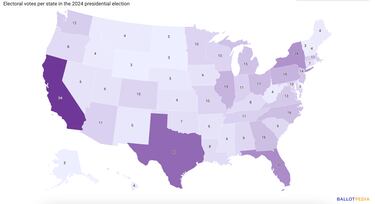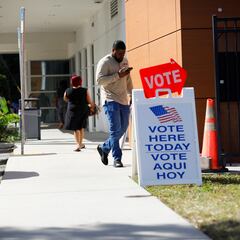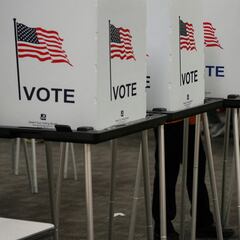What is the Electoral College, how does it work and who selects the electors that choose the president?
In the US presidential election, it is a small group of Electoral College members - not the voting public - that has the final say over the outcome.

When it comes to voting for its president, the United States employs an electoral system that isn’t the most straightforward. Unlike other countries, the president is only indirectly chosen by the general population; it is actually a body called the Electoral College that is directly responsible for deciding the identity of the commander-in-chief, through a vote carried out soon after the public has gone to the polls on the first Tuesday in November.
Follow AS’s live coverage of Election Day and the count in swing states
- Pennsylvania US Election Results 2024 live
- Wisconsin US Election Results 2024 live
- Georgia US Election Results 2024 live
- Nevada US Election Results 2024 live
- Michigan US Election Results 2024 live
- North Carolina US Election Results 2024 live
- Arizona US Election Results 2024 live
How does the Electoral College work?
Although it is conducted nationwide, the US presidential election is really a series of state-level ballots: each of the country’s 50 states, plus the District of Columbia, votes for its preferred White House candidate, who is generally awarded all of that territory’s ‘electoral votes’ in the Electoral College ballot.
Held early in the December after the US presidential election, the Electoral College vote involves a total of 538 ‘electors’ who are nominated for the job by their party, and are each given one vote. “Generally, the parties select members known for their loyalty and service to the party, such as party leaders, state and local elected officials, and party activists,” the National Conference of State Legislatures explains.
To win the presidency, a candidate needs to win a majority of the 538 electoral votes up for grabs - in other words, a minimum of 270. The larger the population of a state or district, the more electoral votes it has to hand out. For example, California has an unmatched 54 electoral votes as it is the most populated state in the US, while at the other end of the spectrum, sparsely populated states such as Wyoming have just three electoral votes.
Almost every state or district in the US doles out its Electoral College votes on a winner-takes-all basis: they are awarded in their entirety to the candidate that prevails in the popular vote in that part of the US.
There are two exceptions to this: in Nebraska and Maine, which have four and five Electoral College members, respectively, these votes are distributed proportionally. In the 2020 presidential election, for example, Democrat Joe Biden won three electoral votes to Republican incumbent Donald Trump’s one in Maine, while Trump took home four votes to Biden’s one in Nebraska.
How many electoral votes does each US state have?

What do Americans think about the Electoral College?
In 2023, a survey carried out by the Pew Research Center found that more than 65% of Americans are against the Electoral College system. Notably, a concern among the US public is that not all states’ electoral voters are bound by law to respect the will of the electorate in the Electoral College ballot. In the 2016 election, for example, there were seven so-called ‘faithless’ electors.
Related stories
What’s more, the Electoral College system has led to instances in which a candidate won the popular ballot nationwide but, because of the state-by-state distribution of the votes they received, did not earn enough electoral nods to secure the presidency. This century, this has twice been the case: in 2000, Democrat Al Gore lost out to Republican George W Bush, despite winning 500,000 more votes across the US. And 16 years later, Democratic candidate Hillary Clinton was beaten to the White House by Trump, even though she racked up just under three million more votes on Election Day.
Rather than enabling the election of the most popular candidate throughout the country, a majority of Americans told Pew’s researchers, the Electoral College system ultimately allows a small number of swing states - closely-fought states in which both candidates have a reasonable expectation of winning - to decide the identity of the president for the next four years.


Complete your personal details to comment